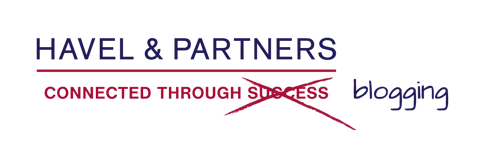The Chamber of Deputies is currently discussing a long-prepared amendment to the Act on Regulation of Advertising (Chamber of Deputies Document 918, available here). The proposed amendment introduces several significant changes to the rules for advertising of medicinal products and medical devices. While the main goal of the amendment is to modernize the rules, some proposed measures raise concerns about excessive restrictions and unnecessary administrative burdens. The overall balance of pros and cons is therefore inconclusive. It is also uncertain whether the proposed amendment will be approved in this parliamentary term, as it has not yet passed the first reading in the Chamber of Deputies.
Let’s take a closer look at what the amendment brings and why it raises many questions.
Changes in advertising of medicinal products
- QR code instead of long texts
One of the welcomed proposals is the possibility to provide basic information according to the Summary of Product Characteristics (SPC) via a QR code – even in printed materials. This would finally allow replacing extensive and confusing printed text with a link to digital content.
However, information on dispensing and reimbursement would likely still need to remain in printed form.
- Patient programs and educational materials
The amendment formally provides for the rules for patient programs and educational materials. Although the intention was to clarify that these activities are permissible, the proposal sets relatively strict rules for them. For example, a patient program could only be organized by a healthcare provider (e.g., a hospital), a learned society, or a patient organization, but not by pharmaceutical companies (even though they are the ones that typically organize patient programs in practice).
- Education of non-medical professionals
Educational activities aimed at non-medical professionals (e.g., nurses) should not be classified as advertising, provided specific conditions are fulfilled – one of which is the prior notification of the event to the State Institute for Drug Control.
- Samples
The proposal aims to clarify the rules for providing samples, which could bring greater legal certainty.
Key changes in medical devices
- End of the prohibition on promoting hospital medical devices to laypersons
Perhaps the most significant change comes in the realm of medical devices – the amendment lifts the prohibition on promoting so-called hospital medical devices to laypersons. This is a groundbreaking change that would make it easier for patients to access information.
- New definition of mandatory information
However, the proposal also introduces new mandatory information that must be included in advertising. The problem is that such information is not clearly defined – for example, "probable risks" can be interpreted very subjectively.
Controversial and problematic points of the amendment
- No transition period
The amendment is proposed to take effect from 1 July 2025, without a transition period. If the amendment is approved, the market would have only a few weeks to get ready.
- Stricter rules for advertising targeted at professionals
The amendment introduces a number of new and significant restrictions on advertising of medical devices targeted at professionals – including a prohibition of recommendations and comparisons. If interpreted literally, this would significantly limit the currently common marketing practices.
- Advertising to laypersons: paradoxically more complex
While the ban on promoting hospital medical devices to laypersons is being lifted, the practical impact may be limited by a newly introduced regulation of "information to patients".
- Complex rules for "non-promotional" educational events
The changes also affect non-promotional educational events. Some administrative requirements are so strict that they could complicate the organization of such events.
- Patient programs
The setting of rules for patient programs is very restrictive.
- Prohibition of accepting donations by legal entities
The amendment also introduces a prohibition on legal entities to accept donations in connection with advertising. This could make it difficult for hospitals to access donated equipment or materials.
Conclusion?
The amendment aims to modernize and simplify some existing restrictions – and this is certainly a step in the right direction. At the same time, it brings several legal uncertainties and new administrative burdens. And the market would have minimum time to prepare. It seems that we will have to wait a bit longer for thoughtful and balanced regulation of advertising that fulfils the liberalization goal without leading to unnecessary complications and undesirable "side effects".







